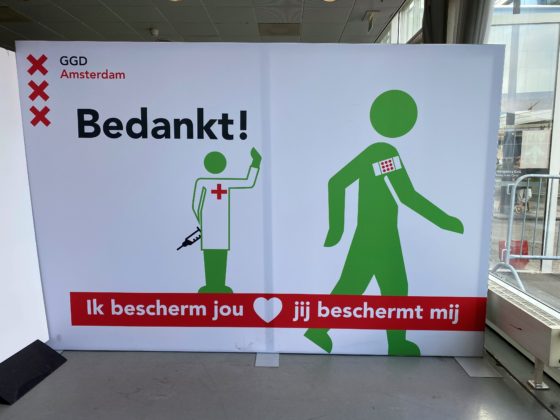The Netherlands turns amber on European Covid-19 map


The whole of the Netherlands turned amber on the latest update of the European Covid incidence map issued by disease monitoring agency ECDC.
The amber status technically means that travel to the Netherlands is still restricted to essential trips only.
Friesland had been the only province still coded red but a fall in infections – to 159 in every 100,000 Frisians in the last two weeks - meant it could be scaled down to the lowest but one safety level. Compared to last week, the number of positive tests fell by 23%, the highest percentage in the country.
Groningen, Drenthe and Noord-Brabant are on the verge of turning green but still have slightly too many infections to meet the ECDC target. However, the infection rate in the Netherlands has been rising over the last few days and this may impact on the next week’s map.
On Thursday, the regional health boards reported 2,760 new infections, a rise of over 800 on Wednesday’s figure, but said this was down to computer malfunctions on the previous days.
There have been an average of 1,887 positive tests a day over the past week, 15% up on the week earlier period.
Bible belt
On the Netherlands’ own coronavirus infection map, published on the government’s coronavirus dashboard website, the Bible belt is emerging as a distinct area as infections rise among fundamental Protestants.
The lowest vaccination rates in the country are currently in the former island of Urk, where just 30% have been vaccinated and in the village of Staphorst, where the figure is 56%.
Local health boards in the Bible belt area, which runs from the north to Zeeland, told the AD on Thursday that they too have noticed a rise in infections.
‘People come across each other all the time, in church and at local clubs, for example,’ said health board doctor Ashis Brahma. Churches do not have to use the coronavirus pass system because of freedom of religion rules.
In total, nearly 83% of the over-18s in the Netherlands have been fully vaccinated, but the take up rate is so far just 53% among teenagers.
Thank you for donating to DutchNews.nl.
We could not provide the Dutch News service, and keep it free of charge, without the generous support of our readers. Your donations allow us to report on issues you tell us matter, and provide you with a summary of the most important Dutch news each day.
Make a donation